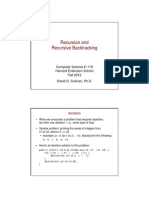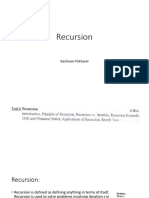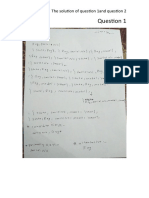0% found this document useful (0 votes)
84 views55 pagesChapter 6 - Recursion
The document discusses recursion, providing examples like calculating triangular numbers, factorials, and Fibonacci numbers recursively. It explains that recursion involves defining a base case and a recursive step that calls the function on a smaller problem. The document also discusses using recursion to implement algorithms like binary search, anagrams, and the Towers of Hanoi puzzle.
Uploaded by
Bandar AbdallatCopyright
© © All Rights Reserved
We take content rights seriously. If you suspect this is your content, claim it here.
Available Formats
Download as PPTX, PDF, TXT or read online on Scribd
0% found this document useful (0 votes)
84 views55 pagesChapter 6 - Recursion
The document discusses recursion, providing examples like calculating triangular numbers, factorials, and Fibonacci numbers recursively. It explains that recursion involves defining a base case and a recursive step that calls the function on a smaller problem. The document also discusses using recursion to implement algorithms like binary search, anagrams, and the Towers of Hanoi puzzle.
Uploaded by
Bandar AbdallatCopyright
© © All Rights Reserved
We take content rights seriously. If you suspect this is your content, claim it here.
Available Formats
Download as PPTX, PDF, TXT or read online on Scribd
/ 55






























































































